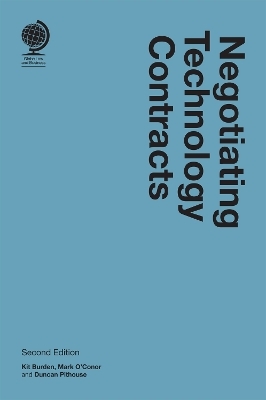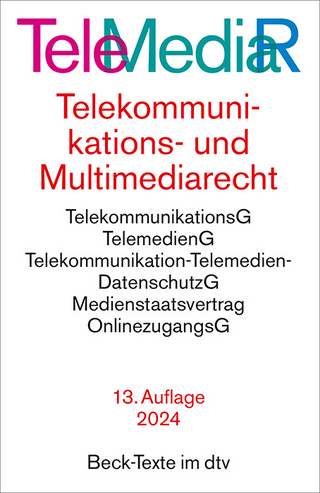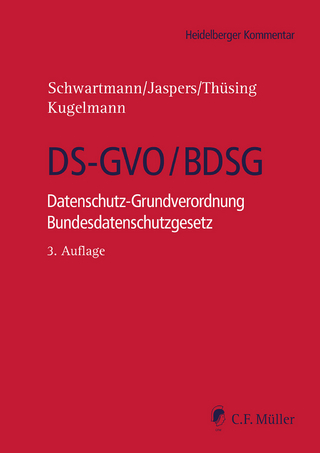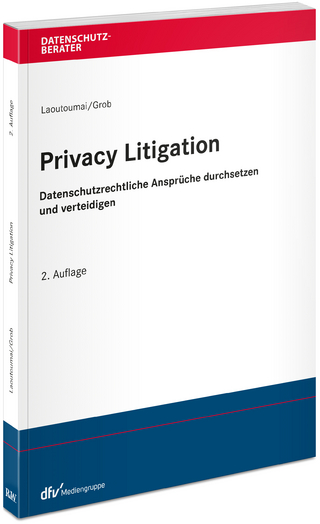
Negotiating Technology Contracts, Second Edition
Globe Law and Business Ltd (Verlag)
978-1-78742-979-6 (ISBN)
Technology underpins everything we do, and the contracts which underpin the delivery of technology-related services are important from both an economic and social perspective. Negotiating technology-related contracts can, however, be challenging: for the uninitiated or uninformed, the significance of the points under discussion may be unclear, confusing and often at odds with the outcomes one might expect in more traditional ‘bricks and mortar’-style contracts.
To avoid unnecessarily protracted negotiations, it is essential to have a clear understanding of: (i) what each part of a technology-related contract is designed to deal with; (ii) what the customer and service provider seek to protect; and (iii) what solutions or compromises are available.
This second edition provides a practical, commercial guide to negotiations without a heavy focus on ‘black letter law’, and seeks to explain the perspectives of both sides of the negotiating table on a clause-by-clause basis, clearly setting out the key points they will want to protect – and why – while also offering suggestions as to what they may be willing to concede or compromise upon. It is written with the benefit of DLA Piper’s unparalleled view of the global market for technology sourcing and outsourcing projects, and from acting for customers and service providers in this space over many years and in many jurisdictions.
Chapters cover the common negotiating ‘battlefields’, from service descriptions and service levels through to warranties, indemnities, liability provisions and termination rights. The authors also examine issues associated with particular technology-related engagements, such as those based on agile methodologies, those involving the use of AI-based solutions, or those operating within heavily regulated sectors.
This edition will be of interest to anyone involved in technology-related contracts, whether acting for the buy side or sell side, and whether working within law firms or legal departments or more general commercial functions who have a need to understand the way in which such contracts work.
Introduction _________________ 7
1. Due diligence in outsourcing arrangements____________ 11
1. Introduction...............................................11
2. The customer perspective.....................................................17
3. The service provider perspective.....................................................21
4. Potential solutions .........................25
5. Conclusion...................................................27
2. Service provisions ______ 29
1. Introduction...............................................29
2. The customer perspective.....................................................30
3. The service provider perspective.....................................................34
4. Potential solutions .........................37
3. Compliance with laws and regulations_________ 41
1. Introduction...............................................41
2. The customer perspective.....................................................42
3. The service provider perspective.....................................................46
4. Potential compromises...........49
4. Service level agreements _____________ 55
1. Introduction...............................................55
2. Service level models...................................................................56
3. The customer perspective.....................................................58
4. The service provider perspective.....................................................63
5. Potential solutions .........................68
5. Use of agile methodologies __________ 73
1. Introduction...............................................73
2. The customer perspective.....................................................80
3. The service provider perspective.....................................................81
4. Potential solutions .........................81
6. Warranties ______________ 87
1. Introduction...............................................87
2. The customer perspective.....................................................88
3. The service provider perspective.....................................................92
4. Potential compromises.............................................97
7. Relief/excused events __________________ 103
1. Introduction..........................................103
2. The customer perspective................................................105
3. The service provider perspective................................................107
4. Potential solutions ....................108
8. Intellectual property provisions______________ 111
1. Introduction..........................................111
2. The customer perspective................................................113
3. The service provider perspective................................................116
4. Potential solutions ....................118
9. Data protection liabilities_______________ 123
1. Introduction..........................................123
2. The customer perspective................................................124
3. The service provider perspective................................................126
4. Potential solutions ....................128
10. Benchmarking in outsourcing transactions ___________ 133
1. Introduction..........................................133
2. The customer perspective................................................137
3. The service provider perspective................................................138
4. Potential solutions ....................139
11. Setting limits of liability ________________ 143
1. Introduction..........................................143
2. The customer perspective................................................148
3. The service provider perspective................................................150
4. Potential solutions ....................152
12. Excluded liabilities ____ 155
1. Introduction..........................................155
2. The customer perspective................................................156
3. The service provider perspective................................................157
4. Potential solutions ....................160
13. Unlimited liabilities_______________ 165
1. Introduction..........................................165
2. The customer perspective................................................165
3. The service provider perspective................................................170
4. Potential compromises........................................175
14. TUPE in outsourcing agreements ____________ 181
1. Introduction..........................................181
2. The customer perspective................................................186
3. The service provider perspective................................................189
4. Potential solutions ....................191
15. Termination rights ____ 197
1. Introduction..........................................197
2. The customer perspective................................................198
3. The service provider perspective................................................204
4. Potential solutions ....................206
16. Step-in provisions _____ 211
1. Introduction..........................................211
2. The customer perspective................................................212
3. The service provider perspective................................................215
4. Potential solutions ....................219
17. Audit rights____________ 221
1. Introduction..........................................221
2. The customer perspective................................................222
3. The service provider perspective................................................224
4. Potential solutions ....................227
18. Dispute resolution provisions______________ 233
1. Introduction..........................................233
2. The customer perspective................................................233
3. The service provider perspective................................................238
4. Potential solutions ....................240
19. Negotiation in practice ________________ 241
1. Background.............................................241
2. Initial considerations ...........242
3. The procurement process..............................................................243
4. Key contract aspirations of the parties.........................................246
5. Likely areas for key debate and potential solutions.......................................................249
20. Contracting for new and complex technology _____________ 255
1. Introduction..........................................255
2. The European approach......................................................257
3. The UK approach.........................259
4. The US approach..........................259
5. Common ground.........................260
6. Contractual provisions...................................................261
7. How does AI work?...................261
8. Description of functionality.........................................262
9. Intellectual property..............262
10.Bias..........................................................................264
11.Explainability......................................265
12.Service performance...............266
13.Liability..........................................................267
14.Termination...........................................268
15.Exit..........................................................................269
21. Types of technology contract________________ 271
1. Introduction..........................................271
2. Software licence..............................271
3. Software maintenance........272
4. Hardware provision.................273
5. Hardware maintenance.........................................273
6. Cloud services....................................274
7. Outsourced/managed service............................274
8. Website/online terms....................................................................275
9. Telco/network services.............................................................275
10.IP transfers and joint ventures.........................................................275
11.Technology-related consultancy services...............275
22. Cloud services__________ 277
1. Introduction..........................................277
2. The customer perspective................................................278
3. The service provider perspective................................................282
4. Potential solutions ....................284
23. Regulated procurement___________ 289
1. Regulated procurement in the public sector..................289
2. Regulated procurement in the financial services sector...................................................................296
24. Managing contract disputes ________________ 303
1. Introduction..........................................303
2. Causes of contract disputes...........................................................303
3. Managing disputes....................307
Conclusion ________________ 315
About the authors_________ 319
Index ______________________ 321
About Globe Law and Business ___________________ 329
| Erscheinungsdatum | 24.08.2023 |
|---|---|
| Verlagsort | London |
| Sprache | englisch |
| Maße | 160 x 240 mm |
| Themenwelt | Recht / Steuern ► EU / Internationales Recht |
| Recht / Steuern ► Privatrecht / Bürgerliches Recht ► IT-Recht | |
| ISBN-10 | 1-78742-979-2 / 1787429792 |
| ISBN-13 | 978-1-78742-979-6 / 9781787429796 |
| Zustand | Neuware |
| Haben Sie eine Frage zum Produkt? |
aus dem Bereich


